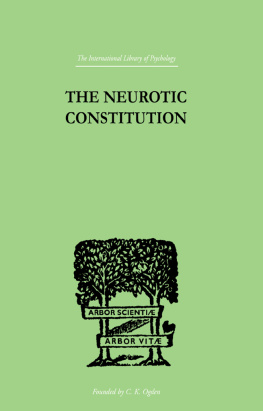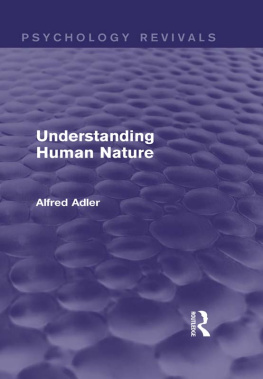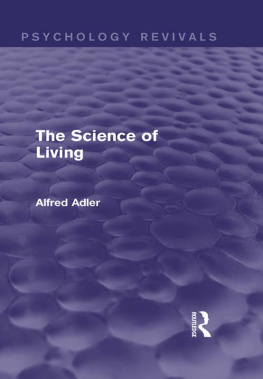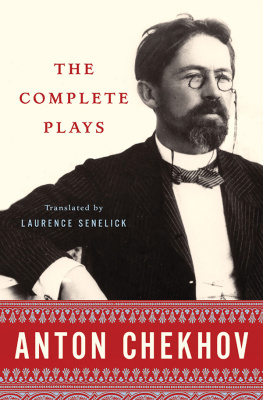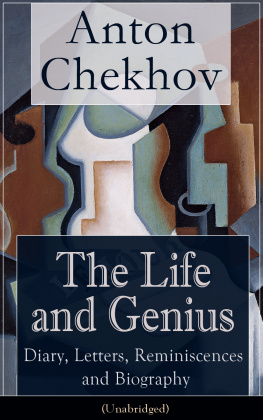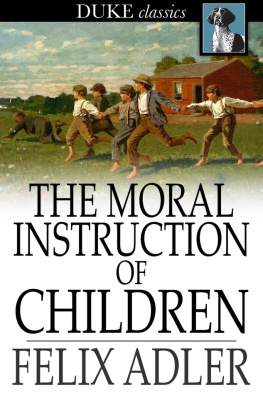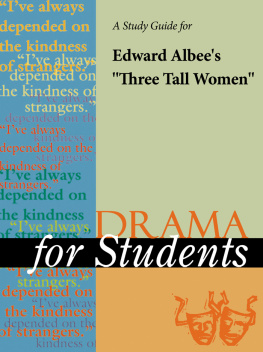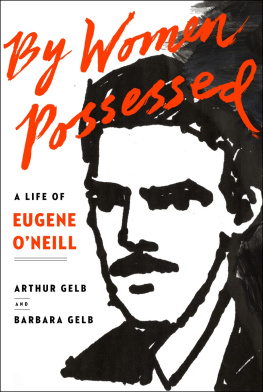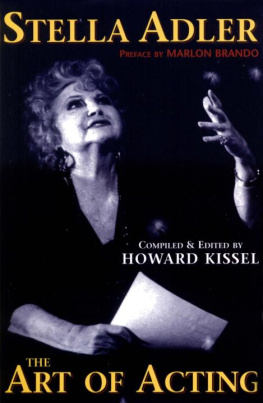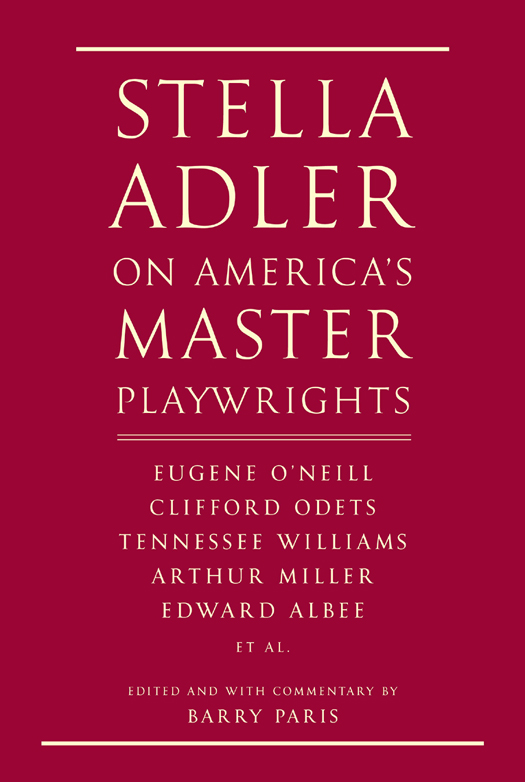THIS IS A BORZOI BOOK
PUBLISHED BY ALFRED A. KNOPF
Copyright 2012 by The Estate of Stella Adler
Editing and compilation copyright 2012
by Alfred A. Knopf, a division of Random House, Inc.
All images courtesy of Photofest.
All rights reserved. Published in the United States
by Alfred A. Knopf, a division of Random House, Inc.,
New York, and in Canada by Random House of
Canada Limited, Toronto.
www.aaknopf.com
Knopf, Borzoi Books, and the colophon are registered
trademarks of Random House, Inc.
Grateful acknowledgment is made to the Estate of
Clifford Odets for permission to reprint excerpts from
Golden Boy by Clifford Odets, copyright 1937 by
Clifford Odets, copyright renewed 1965 by Nora Odets
and Walt Whitman Odets. Reprinted by permission of
the Estate of Clifford Odets administered by Creative
Artists Agency care of George Lane.
Cover design by Linda Huang
eISBN: 978-0-307-80042-8
Library of Congress Cataloging-in-Publication Data
Adler, Stella.
Stella Adler on Americas master playwrights :
Eugene ONeill, Thornton Wilder, Clifford Odets,
William Saroyan, Tennessee Williams, William Inge,
Arthur Miller, Edward Albee. / Stella Adler; edited and
with commentary by Barry Paris.IST ed.
p. cm.
1.DramaExplication. 2.American drama
20th centuryHistory and criticism.
I.Paris, Barry. II.Title.
PN1707.A335 2012
812.509DC23 2012018983
v3.1
C ONTENTS
A POLOGIA AND A CKNOWLEDGMENTS
S PEECH IS NOT PROSE no matter how eloquentespecially when spoken by a great actress whose repertoire of inflections, tone shifts, accents, emotional tics, volume, speed tunings, and myriad other vocal nuances defy rendering in print. Conversely, reading is not hearing. Listening to Stella Adlers words is a more powerful experience than examining transcripts of them.
One can do either or both at the University of Texass great Harry Ransom Center, which houses an enormous cache of hundreds of Adlers audio and videotape lectures, along with thousands of pages of selected transcriptions. They are indexed as well as the centers resources allow, and people who wish to dip into them or search a general topic may do so. But its an embarrassment of riches. The problem is too much, not too little. How to distill it? Turning such massive raw material into a unified text is easier said than done.
Repetitio est mater studiorumrepetition is the mother of learningthe Jesuits of my youth decreed, and Adler, like other legendary pedagogues, employed a great deal of it in the course of a course. Yet repetition is the mother of boredom (and critical brickbats) in print. Nobody is, or could be, Stella Adlers ghostwriter. But someone had to be her editorto collate, condense, and integrate her lectures as seamlessly and unintrusively as possible. The editing challenge was to remove much of her intra- and inter-lecture redundancy while retaining her most essential, recurring mantras. Sifting through three thousand pages, it was fascinating to see how many different ways she could find to say, Dont go to the goddamn words! or In your choice lies your talent.
That latter dictum haunted me in agonizing over which plays to include and exclude in the volume at hand. Stella Adler and I had discussed and quickly agreed on the EuropeansIbsen, Strindberg, and Chekhovfor Volume I. But sadly, her death just five weeks later meant we never had time to settle on which American playwrights to incorporate in Volume II.
In the end, I let her determine that by way of a simple quantitative measure: Tennessee Williams, Arthur Miller, and Eugene ONeill were the shoo-ins, along with Clifford Odets, Adlers closest playwright-friend during their heyday in the Group Theater. Her lectures on those four writers (individually) were more numerous than on all the others combined. But which of their plays to include, the better- or lesser-known ones? Theres no debating the relative importance of A Streetcar Named Desire vs. The Lady of Larkspur Lotion, or Death of a Salesman vs. After the Fall in theatrical history. But theater, like music, gets dull when restricted to the Top 40. Vicky Wilson and I sought a balance between her revelatory take on the popular staples and her unique unveiling of some obscure ones.
Thornton Wilder and William Saroyan were personally, as well as professionally, beloved by Adler. They demanded inclusion. Her esteem for the plays of William Inge and Edward Albee meant they would round out the second quartet of writers.
Stella and I intended from the outset that her two books should appeal to general readers, not solely (or even mainly) to theater people and scholars. The latter will, I hope, forgive her frequent paraphrasings of dialogue and my conflations of certain lectures. Ive tried, in this volume, to accommodate critics of the first volume who wanted more footnote explications, without condescending to the cognoscenti who didnt, and dont. If not satisfied with the results here, those critics can go directly toother sources.
One can find less opinionated, cantankerous sourcesand greater individual authorities on ONeill, Odets, Williams, et al.than Stella Adler, but no better font of insight into all of them. It is The Big Picture she gives us. She was a Buckminster Fuller type, a universalist among the specialists, not college-taught but theater-taughta tougher matriculation. The case can be made that she was the most compelling acting teacher of twentieth-century theater, as well as its greatest voice.
Literally. Her unpredictable bursts of trenchant, dagger-sharp, Yiddish-based humor reached withering heights when directed at students. (One of us is going to win, she told actress Kyra Sedgwick during a classroom argument. Which one do you think itll be?) She was like her voice itself: grand, commanding, intimidating, pontifical, and majesticin service to the redemptive glory of theater.
Now and always, it is a mesmerizing voice to hear.
* * *
In the beginning the genesis of the Stella Adler books emanated from my brilliant friend and editor Victoria Wilson, followed by a lengthy exodus of my wandering through the analytical desert. She and her patient assistant, Carmen Johnson, are most responsible for leading me out.
Helen Baer, of the fabulous Harry Ransom Center, was invaluable. There is no better, more state of the art, user-friendly archive in captivity. Copy editor Patrick Dillon made countless invaluable contributions. I am very grateful as well to Ellen Adler, Tom Oppenheim, and the late Irene Gilbert.
Maria Selma Ciaccia was and is, simply, the greatest researcher, supporter, and technical assistant anyone could ever have. But I could not have done the job without the crucial ongoing help of Ben Paris, Myrna Paris, Ron Wisniski, and Randy Eugene. Additional thanks to Leland Scruby, Allison Drash, the great Brothers Mandelbaum at Photofest, long-suffering Dan Strone of Trident, Merica and Brian Frost, Pamela and Todd Loyle, Attila Li, Tim and Kay Menees, Sean Connolly, Cathy Henkel, Daniel Schwartz, John Barba, and Austin Sillman.
This book is dedicated, on Stella Adlers behalf, to all actors and artists: Life is boring. The weather is boring. Actors must not be boring, she said. Life beats down and crushes the soul, and art reminds you that you have one.
BARRY PARIS


